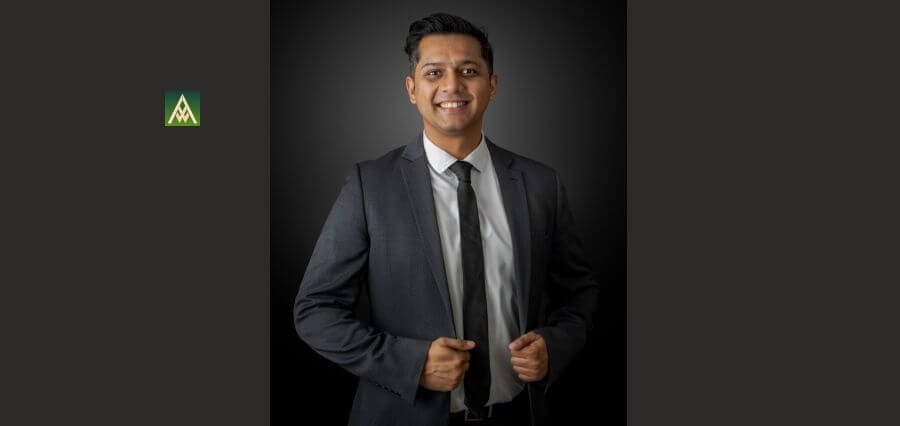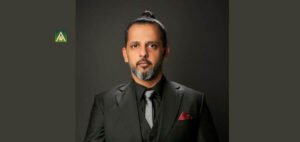In the digital age, marketing is the biggest brand connector to its audience. It ensures that the business creates its strongest bond with its consumers (current and prospective) via all the available channels. Harshvardhan Singh, too, actually came into marketing through the lens of business strategy and growth. His passion has always been about building things—brands, partnerships, and ecosystems that drive meaningful value.
From Strategy to Storytelling: A Marketer by Evolution, Not Accident
Over time, he realized that marketing is the perfect intersection of creativity, data, and human psychology. “That blend of art and science really clicked with me—especially seeing how the right message at the right moment can change behavior or build trust at scale.” That’s how marketing evolved from being a side tool in Singh’s role to becoming an integral part of what he does. It’s not just about selling—it’s about creating stories and experiences that resonate. That’s what drew him in, and it’s what keeps him excited about marketing every day: the potential to drive real change and build long-term relationships.
The Dynamic Role: Navigating Strategy, Creativity, and Agility
“No two days look alike, and that’s something I love about my role,” says Singh. As the Head of Strategic Partnerships at AA AL Moosa Enterprises – CRG – & Thrifty Dollar Singh navigates a blend of strategy sessions, creative brainstorms, performance reviews, and constant experimen tation with new platforms. “The real challenge is balancing the creative spark that drives innovation with the data-driven rigor that keeps us grounded. We keep a tight feedback loop—start with big ideas, but always test, measure, and optimize,” he states. It’s not about rigid plans; it’s about agility. “Creativity gives us the edge—differentiating our campaigns and making them memorable—while data ensures we’re making informed decisions and driving results. It’s this balance between the two that really powers the marketing engine and keeps us moving forward in an ever-changing landscape.”
Marketing in Real Time: Agility, AI, and the Era of Micro Content
Marketing has evolved rapidly over the past decade. Accord ing to Singh, the biggest shift has been the sheer speed of iteration and the introduction of AI and hyper personalization. In the past, Singh adds that they would plan campaigns months in advance, focusing on broad narratives. Now, it’s all about real-time engagement, micro-content, and agility. He has personally embraced this by becoming much more experimental—constantly testing new platforms, collaborating with tech innovators to improve customer experiences, and diving deeper into data analytics to stay ahead. Automation has helped free up time to focus on bigger picture strategies, but Singh has also learned that the human touch remains crucial. “The changes have been exciting, forcing us to be nimbler, more innovative, and more focused on what really matters to the customer at each step.”
Launching Cariva: Building Trust in a Trust-Deficient Market
Launching Cariva has been a standout moment for Singh, who now serves as its Business Head and his team. It wasn’t just about promoting used cars—it was about creating genuine trust in a market where that’s often lacking. He shares that they positioned Cariva as a brand built on credibility, from offering agency warranties to crafting a seamless, digital-first customer journey. What made this project special was how they aligned every element—creative, messaging, and customer experience—around a single, clear promise of quality and reliability. It taught Singh that clarity and transparency in your value proposition can be a powerful differentiator. More importantly, the authenticity of your story resonates far deeper than flashy campaigns. Seeing Cariva grow from an idea to a trusted name in the market has been incredibly rewarding for him.
Listening Between the Lines: Merging Data with Human Insight
Customer behavior is always changing. To stay attuned to their audience’s needs, Singh ensures that they constantly listen to them—whether it’s through analytics dashboards, direct feedback on WhatsApp, or real conversations with sales teams. Tools like Meta Ads Manager, Google Analytics 4, and heatmaps are incredibly helpful for understanding the “what”—what people are clicking on and where they’re dropping off. But real insights come from asking “why.” Talking directly to customers or listening to feedback from the front lines brings in a human context that pure data can’t capture. So, it’s really about blending those two—hard data with real conversations—to shape strategies that are not only data-driven but also genuinely human-centric. “That’s how we keep our campaigns aligned and truly resonate with the evolving needs of our audience,” he says.
Platform-Aware Storytelling: Crafting Emotionally Intelligent Campaigns
According to Singh, storytelling is everything in market ing—it’s how you stand out and make an emotional connec tion. People don’t remember product specs or service details—they remember how you made them feel and the journey you took them on. “At CRG, we anchor our messaging in stories of trust, transformation, and smart decisions that resonate with customers’ lives. We understand that each platform has its own vibe—what resonates on Instagram might not land on LinkedIn, for example. But the core story—the “why” of what we’re doing—remains consistent no matter the platform. We put in the effort to adapt and tailor our creative to fit each medium, ensuring that the message stays authentic and engaging while always staying true to our brand’s heart,” he explains.
Leading Through Freedom: Empowerment Meets Accountability
In terms of leadership, Singh believes in fostering a culture of autonomy with accountability. His team knows they have the freedom to test new ideas, experiment, and even fail—because that’s how innovation happens. But they also know they’re responsible for learning from every outcome and sharing those learnings openly. A great marketing leader today is part creative director, part data analyst, and part coach. “You need to inspire your team to think big but also provide them with the support and structure to execute quickly and effectively.” It’s about encouraging curiosity, removing bottlenecks, and creating an environment where people feel safe to take smart risks. That’s how you keep pushing boundaries and driving growth in a fast-moving world, he insists.
Earning Trust, Not Just Attention: Overcoming Market Skepticism
Talking about challenges, Singh says a major one has been launching into a competitive space without much built-in trust—like the used car market in the UAE. People naturally hesitate when there’s uncertainty or past negative experiences in a category. “We overcame it by baking credibility into the very core of what we offer—like including agency warranties and focusing on transparency in pricing and communication. We also worked hard to be consistent across every touchpoint—social media, website, in-store.” That authentic ity, paired with a clear value proposition, slowly built trust and differentiated the brand from the competition. It reinforced for Singh that trust isn’t built overnight—it’s earned through relentless clarity and consistency in every interaction with the customer.
The Future of Marketing: Orchestrators, Not Just Executors
Today, with AI and automation accelerating so rapidly, Singh sees the marketer’s role evolving from being hands-on executors to becoming orchestrators of experiences. AI will take over the repetitive, time-consuming tasks—like data crunching, personalization at scale, and even creative testing—freeing up marketers to focus on the bigger picture. But the human side—strategic thinking, brand storytelling, emotional intelligence—will become even more critical. The best marketers will be those who know how to harness AI to enhance their work, not replace it. They’ll be the ones who can blend technology with creativity to create campaigns that are not just targeted but also deeply resonant and human, he shares.
Advice for Aspiring Marketers: Stay Curious, Stay Customer-Centric
Finally, Singh’s advice to the next generation of marketers who are just starting to find their voice in this ever-changing industry would be to stay curious and hands-on and always keep the customer’s perspective in mind. “Learn the tools of the trade—analytics, AI, platforms—but also learn the “why” behind what drives people to act. Don’t get caught up in chasing visibility for the sake of it—focus instead on creating genuine value for your audience. And don’t be afraid to experiment and fail—because that’s how you learn and find the sweet spots for growth. Above all, remember that market ing isn’t just about selling—it’s about building trust, fostering relationships, and driving long-term impact. If you can master that, you’ll thrive in this ever-changing field.”




